Impact driver buying guide
Impact driver buying guide
Introduction
Impact drivers are extremely useful tools for any DIYer or tradesperson who needs to drive lots of fasteners into tough materials quickly. But there are different types available, all with various features, so it can be hard to know which impact driver you need.
This comprehensive impact driver buying guide will help you decide. It explains what an impact driver is, how it works and what it does. It covers the types of impact drivers and their uses. And it explains the different features, power ratings and battery technology. Finally, it highlights some key things to consider when buying an impact driver and answers some frequently asked questions.

What is an Impact Driver?
An impact driver is a power tool used for driving fasteners, such as screws, nuts and bolts into materials. And although it looks like a drill, it's not designed to drill holes. An impact driver outputs higher torque levels than a drill, making it more efficient for quickly driving long, wide and large screws into tough materials. As a result, it significantly reduces your work time when large volumes of fasteners need to be secured. It's also useful for loosening fasteners that have become stuck without damaging the head.
How does an impact driver work?
An impact driver works by using rotational force combined with bursts of impact and high torque levels to drive-in fasteners. The rotation works in a two-steps-forward, one-step-back pattern, and the bursts of impact happen up to 50 times per second when the driver encounters resistance. This function makes an impact driver significantly more effective at driving in fasteners than drills.
What Impact Driver do I Need?
When choosing an impact driver, there are several factors to consider.
The most important questions are, what type of fastener do you need to drive, and what kind of material will you be driving the fasteners into? Because every type of impact driver has different uses, these things will influence which one you buy and how much power, rotational force and torque you need. Generally, the bigger the task and the harder the material, the more power, force and torque you'll need.
Another thing to consider is how often you'll use it. For example, if it's for infrequent DIY use, you probably won't need as much power as a tradesperson who will use the tool frequently. Your budget is also something to consider.
Impact driver vs drill
The most obvious difference between an impact driver and drill is that an impact driver is designed to drive fasteners, while the drill is designed to bore holes. However, some drills also have a screwdriver function.
There are some pros to having a combined drill and driver. You get two tools in one, which saves on costs, and it’s more convenient than constantly swapping between tools. But there are also cons. Drills don’t have enough torque to reliably drive fasteners through hard materials. They drive fasteners slowly compared to an impact driver. And they rotate much faster, which means you have less control, and screw heads tend to get damaged.
There are a few other drills and impact driver types that often get confused:
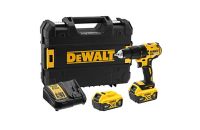
Combi drill vs impact driver
A combi drill combines a hammer drill and a drill driver. It’s suitable for tightening and loosening screws and drilling into wood, plasterboard metal and masonry. It’s perfect as an all-rounder drill/driver if you only need the driver function for occasional use. And you can’t use an impact driver for metal or masonry. But if you’re driving large volumes of fasteners into other materials, then the impact driver is the better tool for the job
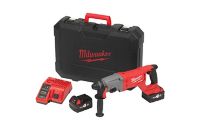
Hammer drill vs impact driver
A hammer drill applies a hammering action as it rotates, allowing it to easily drill through tough materials like masonry. It's too heavy and powerful to drive in screws.
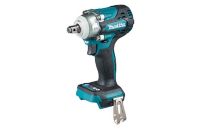
Impact wrench vs impact driver
The difference between an impact driver and impact wrench is in their power and uses. An impact wrench works the same way as an impact driver, but it's heavier, bulkier, and more powerful. It also uses square socket bits for loosening and fastening nuts and bolts, while an impact driver mainly uses hex bits for driving screws.
Read our best drill buying guide for more information about the different types of drills.
Brushed or brushless?
The terms brushed and brushless on impact drivers refer to their motor type.
Brushed impact drivers have a motor that’s driven by small metal brushes. Whereas brushless impact drivers have a motor with an electronic circuit board and sensor. The absence of brushes means brushless motors experience less friction and heat build-up than brushed motors, which makes brushless impact drivers more efficient and powerful. In addition, they have a longer battery run time between charges. As a result, impact drivers with brushless motors are more expensive than with brushed motors, but they have a longer lifespan, making them cheaper in the long run.
Impact Driver Uses
An impact driver's primary use is to drive fasteners into materials. Therefore, they are best used for jobs involving many wood screws, repetitive and long tasks and working on tough materials.
- What is an impact driver used for?
- Decking
- Flooring and roofing
- Fencing
- Shelving
- Building sheds and log cabins
- Any other job that involves joining materials on a large scale
They can also be used for loosening and unscrewing screws and are particularly effective at removing screws that have become too wedged to move by any other method.
There are some jobs that an impact driver isn’t suitable for. For example, they’re not good for precision work, where the location and size of the hole are important. They don’t work well with very short screws or soft materials like softwood. And they aren’t suitable for drilling holes.
Types of Impact Driver
Several types of impact drivers are available, so it can be hard to know which one to buy. This section explains the different kinds of impact drivers and their uses to help you decide.
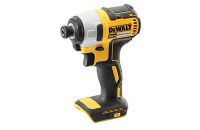
Impact driver
This is the standard type of impact driver that uses high torque levels to quickly drive long screws into tough materials – mainly wood. It's also useful for removing screws that have become stuck. It only takes hex-shaped screw bits.
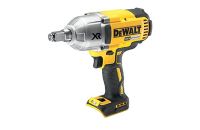
Impact wrench
An impact wrench delivers even higher levels of torque than an impact driver. It only takes square socket bits and is used for fastening and loosening lug nuts and bolts, making it suitable for tasks such as small metal constructions, automotive applications and anchoring support jacks.
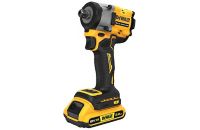
Compact impact wrench
A compact impact wrench is a smaller and more lightweight version of a standard impact wrench. Its compact design makes it ideal for work in confined spaces.
Other variations
- Impact wrench with detent pin: this type of impact wrench has a loaded ball bearing on the bit holder that must be pressed with a tool to release the socket. It’s the most secure method of holding the bit, but it can make it more difficult to change the bit.
- M20 hog ring compact impact wrench: this type of impact wrench has a hole and a rubber ring on the bit holder to hold the bit in place. The bits can be put on and released by hand, making it easy to switch between socket bits quickly.
- ONE-KEY Impact driver: this impact driver lets you connect the tool to an app on a smart device by Bluetooth. You can manage and customise the tool through the app and track its location if it gets lost.
- Ratchet wrench: this is also known as a socket wrench. It’s used to tighten and loosen nuts and bolts using a ratcheting motion.
- Sub-compact ratchet: this is a very compact version of a ratchet wrench for working in confined spaces.
- Right-angled impact driver: this is a type of impact driver with a short and compact right-angled head that allows you to work in confined spaces.
- Sub-compact right-angled impact driver: this is a very compact version of a right-angled impact driver.
- Sub-compact impact driver: this is an even more compact version of a compact impact driver. Its small size allows you to work in very confined spaces.
Impact Driver Features Explained
When buying an impact driver, there are various features and functions to look out for:
-
Built-in LED lights
A built-in LED light on the nose of an impact driver illuminates the area you are working on, allowing you to see in low light and dark places. -
Adjustable clutches
An adjustable clutch allows you to adjust the amount of force an impact driver exerts. It's helpful when using the impact driver on a range of tasks. Driving long screws into hardwood, for example, will need more force than driving shorter screws into a softer wood. -
Variable speed and reverse function
Variable speed allows you to exert more or less force depending on how hard you squeeze the control trigger. It's helpful when using the impact driver across a range of soft and hard materials. The reverse function lets you loosen fasteners. -
Keyless chucks
A keyless chuck allows you to add and remove screw bits from the holder without using a tool. It makes changing the bits quick and easy. -
Vibration protection
This feature helps to minimise the amount of vibration the tool gives off, making it more comfortable on your hands. It's ideal if the tool is used for prolonged periods. -
Soft start
This function lets the screw bit rotation start gradually before reaching maximum speed. As a result, it makes the impact driver easier to control and safer to use. -
Neutral switch
The neutral switch (also called switch lock) prevents the impact driver's trigger from being accidentally pressed while not in use (for example, when it's in a tool bag). It ensures the battery doesn't get drained. -
Belt hooks
This small hook on the tool allows you to hook it over a belt when not in use. It's helpful if the tool is used up a ladder or scaffolding. -
Brake function
The brake function allows you to stop the chuck rotating immediately. It's helpful when driving fasteners quickly, one after the other. -
Charge gauges
This gauge tells you how much battery charge you have left. Some impact drivers have the gauge on the tool, while others have it on the battery. This helpful feature prevents you from running out of charge with no warning.
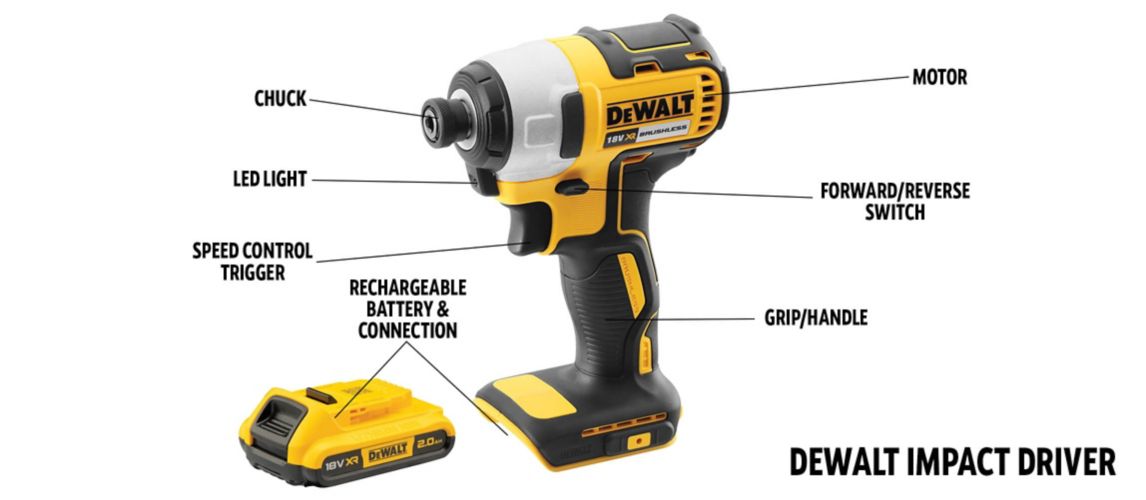
Power Ratings Explained
Impact drivers are powered by rechargeable batteries. The amount of power they have is measured in volts. The power rating is an important factor to consider when buying an impact driver because the higher the volts are, the more power the impact driver has. Therefore, it can tackle heavier tasks.
Another important aspect to consider when thinking about power is the amount of torque the impact driver has. Torque is measured in newton metres (Nm). The higher the number, the more power the impact driver has.
Battery Impact Driver Technology
There are three types of battery technology used in cordless impact drivers:
- Nickel-Cadium (NiCad)
- Nickel-Metal Hydride (NiMH)
- Lithium-ion (Li-ion).
NiCad batteries are the cheapest type. They have a good lifespan, but only if the battery is maintained correctly (i.e., keeping the battery at 70% or above and fully discharging it once a month). If the battery isn't looked after, its memory is severely affected, and its lifespan decreases. NiCad batteries are also heavier than other battery types, and they drain faster.
NiMH batteries are more expensive than NiCad, but they have a bigger charge capacity (often 2 or 3 times greater). On the downside, they also need to be correctly maintained like NiCad batteries, and they have a fast self-discharge rate. And if they are left fully discharged for long periods, they deteriorate rapidly, and their lifespan shortens significantly.
Lithium-ion batteries are the most popular battery used in impact drivers. They can be charged at any time without affecting their memory. There's no self-discharge, so they're always ready to use. They can charge from empty to full power within 60 minutes and hold more power for longer than other battery types. In addition, they're lightweight and better for the environment.
Key Considerations When Buying an Impact Driver
Here are a few more things to consider before buying an impact driver:
-
How frequently and for what period of time will you use the impact driver?
This is important to consider if you plan to use the impact driver for long periods. Choose one with an ergonomic design so the handle is comfortable. And check the battery weight, as holding a heavy battery will be tiring. It's also worth opting for an impact driver with the vibration protection feature, as this reduces the amount of vibration and makes it easier on your hand. -
What is the battery life?
Before choosing an impact driver, consider how long you will need to use it at any one time, then check the battery capacity. Battery capacity is measured in amp hours (Ah), and the number tells you how many amps of electrical charge the battery can deliver in one hour. Cordless battery capacity can range from 1.5Ah to 12.0Ah. The higher the number, the longer it will last between charges. -
What power and torque are needed?
Power and torque are a good indication of how powerful an impact driver is. For example, if you are driving long screws into hardwood, you need a higher power and torque rating than you would for driving medium-sized screws into softer wood. If you'll be using the impact driver for a variety of tasks, it's worth considering one with an adjustable clutch and variable speed, so you have more control. -
What is the weight?
Weight is an important factor to consider if you will be using the impact driver above head height. Or for large volume screw driving tasks where you’ll need to hold the tool for many hours. Impact drivers with large battery capacities will be the heaviest. So, it’s worth weighing up the pros and cons of having a smaller, lighter battery over having more battery capacity. You can buy spare batteries, so you always have a fully charged one, ready to go if necessary. -
What is the motor type?
Consider if a brushed or brushless motor is most suitable for you. For example, impact drills with brushed motors are usually cheaper, but they don't last as long as ones with brushless motors. But if you're only going to use the impact driver occasionally, that's probably not a problem. However, if you are a tradesperson who will be using the tool frequently, a brushless motor will be the better and cheapest option in the long run. -
What accessories are needed?
One of the best accessories for an impact driver is a bit set. They're available with bits of varying sizes to suit various applications. But always check the bits are specifically suitable for an impact driver, as standard screwdriver bits will not be strong enough.
